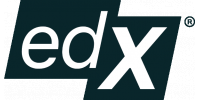- From www.edx.org
Our Place in the Universe

- Self-paced
- Free Access
- Fee-based Certificate
- 4 Sequences
- Introductive Level
- Subtitles in Chinese
Course details
Syllabus
Our Place in the Universe MOOC Syllabus
****
WEEK 1 Humans and the Cosmos
1.1 How Significant Are We?
* How Significant Are We (1)
* How Significant Are We (2)
1.2 Patterns in Nature
* What Patterns and Events Can We Observe in Nature?
* Are There Connections between Humans and the Heavens?
* Why Do the Sun, the Moon and the Stars Move?
* Astronomy is an Oldest Science
1.3 Celestial Bodies: Why Are They There?
* What Can be Learnt from the Sun’s Shadow?
* The Four Special Days of Season Changes
* Why Do the Sunrise and Sunset Positions Change?
1.4 Ancient Models of the Universe
* What Are the Shapes of the Earth and the Heaven?
* How Did People Discover that the Earth is Not Flat?
WEEK 2 Changing Perspectives of the Shape of the Earth
2.1 Turning of the Heavens
* The Pole Star
* The Pole of Heaven
2.2 A Spherical Earth
* How Can We Define Directions and Specific Locations on Earth?
* Looking at the Earth with a New Perspective: The Spherical Model
2.3 The Sun’s Journey through the Stars
* The Sun’s Journey in the Celestial Sphere
* The Zodiac Constellations
* The Stars and the Seasons
* The Ecliptic and the Seasons
* How Do We Tell the Positions of Stars on the Celestial Sphere?
2.4 A Two-sphere Universe
A Two-Sphere Universe Model
* How does the Two-sphere Universe Model Show the Motion of the Sun and Stars?
Special Feature: The Armillary Sphere
* How did the Armillary Sphere Come About?
* How Does the Armillary Sphere Work?
* Making Measurements with the Armillary Sphere
___ ___ ___ ___ ___ ___ ___ ___ ___ ___ ___ ___ ___ _
WEEK 3 The Mysterious Patterns of Cosmic Objects
3.1 Dance of the Moon
* Dance of the Moon
* Determining the Size and Distance of the Moon
* How Does the Sun Affect the Phases of the Moon?
* Lunar Eclipse
* Two Different Lengths of a Month
3.2 The Calendar
* Star Calendar
* Different Calendars of the World
3.3 The Five Wanderers and the Seven Luminaries
* The Five Wanderers and the Seven Luminaries
* The Motions of the Planets
* The Stories of the Two Brightest Planets: Venus and Mars
* The Planets in the Grand Scheme of the Universe
3.4 The Change in Positions of Stars
* The Uneven Seasons
* Why is the Pole Moving? (1)
* Why is the Pole Moving? (2)
WEEK 4 From An Earth-Centered to A Sun-Centered Universe
4.1 The Language of Mathematics in Astronomy
* Cycles Upon Cycles
* Cosmology According to Aristotle
4.2 How Big is the Earth Compared to the Universe?
* The First Measurement of the Size of the Earth
* The First Measurement of the Distance of the Sun
* The First Estimation of the Size of the Universe
4.3 The Post Ptolemy World
* The Age of Islamic Science
* Islam and the Awakening of Science in Europe
4.4 The Copernicus Revolution
* The Man Who Moved the Earth and Stopped the Sun
* Copernicus’ Sun-centered Universe
4.5 The Legacy of Copernicus
* A Milestone in Astronomy - Copernicus’ Heliocentric Model
* Controversies of the Copernican Theory
* What We Learned from Copernicus?
Prerequisite
Instructors
Sun Kwok
Professor
University of Hong Kong
Editor

Platform
Harvard University, the Massachusetts Institute of Technology, and the University of California, Berkeley, are just some of the schools that you have at your fingertips with EdX. Through massive open online courses (MOOCs) from the world's best universities, you can develop your knowledge in literature, math, history, food and nutrition, and more. These online classes are taught by highly-regarded experts in the field. If you take a class on computer science through Harvard, you may be taught by David J. Malan, a senior lecturer on computer science at Harvard University for the School of Engineering and Applied Sciences. But there's not just one professor - you have access to the entire teaching staff, allowing you to receive feedback on assignments straight from the experts. Pursue a Verified Certificate to document your achievements and use your coursework for job and school applications, promotions, and more. EdX also works with top universities to conduct research, allowing them to learn more about learning. Using their findings, edX is able to provide students with the best and most effective courses, constantly enhancing the student experience.

